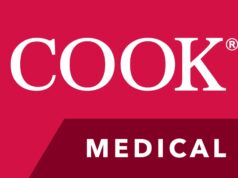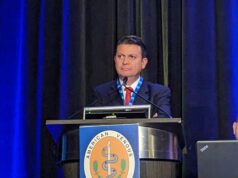 A multicentre, prospective, randomised study published in the Journal of Vascular Surgery: Venous and Lymphatic Disorders (JVS-VL) showed that inspiratory muscle training (IMT), in addition to compression therapy, modified disease activity in patients with chronic venous insufficiency (CVI) with a large effect size. Researchers also found that calf muscle exercise training (CMET) with compression therapy led to improvements with a large effect size on quality of life, venous return time, pain, oedema, and functionality.
A multicentre, prospective, randomised study published in the Journal of Vascular Surgery: Venous and Lymphatic Disorders (JVS-VL) showed that inspiratory muscle training (IMT), in addition to compression therapy, modified disease activity in patients with chronic venous insufficiency (CVI) with a large effect size. Researchers also found that calf muscle exercise training (CMET) with compression therapy led to improvements with a large effect size on quality of life, venous return time, pain, oedema, and functionality.
Gamze Aydin (Istanbul Okan University, Istanbul, Turkey) and colleagues write that the aim of their study was to evaluate the effects of IMT and CMET, in addition to compression therapy, on quality of life, venous refilling time, disease severity, pain, oedema, range of motion, muscle strength, and functionality in patients with CVI compared with compression therapy alone.
In order to achieve this, the investigators randomly divided a total of 32 participants with a diagnosis of CVI into three groups: group one, IMT plus compression therapy; group two, CMET plus compression therapy; and group three, compression therapy alone. They assessed all patients using the chronic venous disease quality of life 20-item questionnaire, Nottingham health profile, photoplethysmography, venous clinical severity score, visual analogue scale for pain, intraoral pressure measurements, dynamometer, digital goniometer, six-minute walking test, and lower extremity functional scale.
Aydin et al report that, after treatment, group two had improved more than had groups one and three in quality of life, venous refilling time, pain, oedema, range of motion, muscle strength, and functionality. In addition, they reveal that group one had improved more than had groups two and three in disease severity and inspiratory and expiratory muscle strength values (p<0.05). Finally, they note that only physical mobility and right leg venous refilling time had increased in group three (p<0.05).
According to the authors, the present study has some limitations, including the different distributions of CEAP (Clinical, Etiology, Anatomy, and Pathophysiology) class in the study groups. In addition, they recognise that the strength, pain, and function assessments were “not always totally objective,” because of the patient’s clinical condition.












